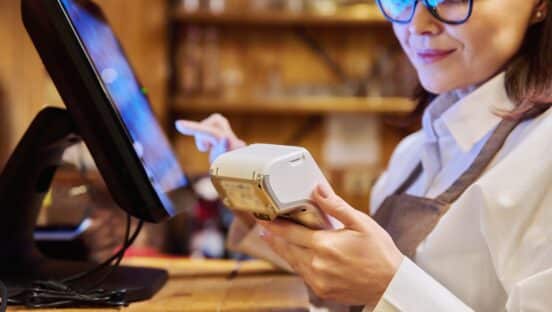Restaurant customers have gone digital like never before. An industry that was starting to boom before the arrival of COVID has accelerated through necessity, and it’s unlikely to ever go away.
Unfortunately, as consumers increasingly use their devices to order their food—reports show that 33 percent of today’s dining experiences involve a smart device—so too does the incidence of online fraud.
“While there’s a lot of good that comes with access to new experiences, curbside pickups, and more, fraudsters tend to follow these trends,” says Jeff Sakasegawa, trust and safety architect at Sift. In fact, he points out, online fraud has increased by more than 35 percent since last year.
Particularly susceptible to fraud are quick-serve restaurants, which are always looking at how to serve customers as quickly as possible. “That really reduces the window you have to review fraud,” Sakasegawa explains. Secondly, the complexities are greater with quick-serve restaurants given the number of locations there often are, which makes it harder to predict whether a digital order is legitimate or fraud.
Restaurant customers don’t want to contemplate fraud or worry about whether their personal data will be jeopardized. They simply want to easily order a meal and then enjoy it.
However, in a recent Sift survey, 62 percent of respondents reported that they worry about fraud when ordering food from a quick-service restaurant, be it in the form of stolen payment, account takeover, or usurped loyalty points. Of these issues, theft of credit card data is the biggest concern, worrying 49 percent of people, and 41 percent are anxious about their account being taken over.
And if the worst did happen at a quick-service restaurant, a third of consumers say they’d stop patronizing that restaurant, which means the loss of a lifetime of transactions from that customer.
The real win for restaurants, Sakasegawa says, is securing their bottom line, not being taken advantage of, blocking fraudsters from finding a way in, preventing customers service interruptions, and protecting their reputation.
And the fraudsters are tricky, Sakasegawa points out. They’re not extracting large sums of money from any one person or order. Instead, they take small amounts, like $10. “It sounds like small stakes but imagine doing this many times at scale,” he says. Fraudsters also have the benefit of time. Any stolen money shows up on a credit card statement weeks after people have placed their order, and how many consumers would notice an additional $10?
Sift is a digital fraud prevention company that steps in to help restaurants—particularly quick-serve and fast-casual restaurants—prevent fraud and apply friction when and where it’s needed to block fraudsters.
And due to its tenure in the field, Sift has seen it all. “Customers are finding new ways to pay, but from Sift’s side, it isn’t new to us; our portfolio is diverse and we’ve pretty much seen every payment method under the sun, so we know where fraud presents itself,” says Sakasegawa.
“If Sift is doing its job well and identifying what’s legitimate and what’s fraudulent, guests don’t know Sift is there,” he adds. “Guests order their meal and have a good experience. So the people who are affected are the fraudsters. It’s all in the background, but it’s all for the betterment of servicing more diners more quickly.”
To learn more about how Sift can help protect your restaurant, visit the company’s website.
By Amanda Baltazar














